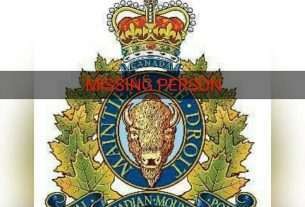**** DND Media Release
Seeking the families of Canadian Army soldiers missing in Korea
The Department of National Defence (DND) and the Canadian Armed Forces (CAF) are asking for the public’s assistance in locating the families of 16 Canadian Army soldiers who went missing during the Korean war in the 1950s.
The 16 soldiers went missing in action between October 11, 1951, and July 12, 1953. Their remains are presumably located near where they were last seen, in the Demilitarized Zone (DMZ) between the Republic of Korea and the Democratic People’s Republic of Korea. The Republic of Korea’s Ministry of National Defense Agency for Killed in Action Recovery and Identification, known as MAKRI, has been working towards locating and recovering the remains of soldiers from the DMZ where Canadian soldiers are reported to have gone missing. Working in close relationship with MAKRI, the CAF is looking for relatives to help identify through genealogical, familial and/or historical research if any discovered remains are those of the missing Canadian Army soldiers.
“Our military relationship with Korea dates back to 1950, when Canada declared its support of South Korea following its sudden invasion by North Korea,” said Lieutenant-General Steven Whelan, Commander Military Personnel Command. “Canada contributed the third largest number of soldiers among United Nations (UN) countries during the Korean war. Of the more than 26,000 who deployed, 516 made the ultimate sacrifice. A formal agreement between the Republic of Korea and Canada signed on June 23, 2021, shows that we will never forget our fallen, and brings us one step closer to granting peace to the families of the soldiers who went missing.”
The successful identification of the missing, and their burial with their name by their regiment, brings closure to the families and a direct link to the past for soldiers currently serving. More broadly, it gives all Canadians the opportunity to reflect on the experience of those who died for their country.
“Canada owes a debt to those who made the ultimate sacrifice for our country,” said Dr. Sarah Lockyer, DND’s Casualty Identification Coordinator. “It is our sacred duty to remember and honour those who died in service to Canada, no matter how long ago or how far away.”
The 16 missing soldiers are listed below:
Private Marcel Bear – 3rd Battalion, Royal Canadian Regiment/Service No. SL-4741 / Date of birth: 26-Apr-32 / Missing Presumed Dead: 03-May-53
Private Marc André Bolduc – 2nd Battalion, Royal 22e Regiment/Service No. E-800002 / Date of birth: 02-Oct-30 / Missing Presumed Dead: 24-Nov-51
Private Donald Frederick Bradshaw – 1st Battalion, Princess Patricia’s Canadian Light Infantry/Service No. SH-61876 / Date of birth: 17-Jul-29 / Missing Presumed Dead: 23-Oct-51
Private John Nicholas Burak – 3rd Battalion, Royal Canadian Regiment/Service No. SK-5520 / Date of birth: 11-Oct-26 / Missing Presumed Dead: 03-May-53
Private Gerard Distefano – 2nd Battalion, Royal 22e Regiment/Service No. D-801423 / Date of birth: 22-May-30 / Missing Presumed Dead: 23-Oct-51
Lance Corporal John Howard Fairman – 1st Battalion, Royal Canadian Regiment/Service No. SM-9462 / Date of birth: 21-Mar-32 / Missing Presumed Dead: 13-Oct-52
Private Robert Gendron – 1st Battalion, Royal Canadian Regiment/Service No. SE-103719 / Date of birth: 15-Jul-25 / Missing Presumed Dead: 06-May-52
Corporal Donald Perkins Hastings – 1st Battalion, Princess Patricia’s Canadian Light Infantry/Service No. SK-12663 / Date of birth: 20-Mar-29 / Missing Presumed Dead: 15-Oct-52
Lance Corporal William Edward Johnstone – 1st Battalion, Princess Patricia’s Canadian Light Infantry/Service No. SF-10453 / Date of birth: 14-Nov-29 / Missing Presumed Dead: 15-Oct-52
Private John Paul Keating – 3rd Battalion, Royal Canadian Regiment/Service No. SB-13903 / Date of birth: 15-Aug-30 / Missing Presumed Dead: 03-May-53
Private Joseph Edward Kilpatrick – 1st Battalion, Royal Canadian Regiment/Service No. SD-4685 / Date of birth: 04-Jul-33 / Missing Presumed Dead: 13-Oct-52
Acting Corporal Joseph Gaston Maurice Ladouceur – 1st Battalion, Royal 22e Regiment/Service No. SD-4552 / Date of birth: 08-Aug-30 / Missing Presumed Dead: 06-Sep-52
Private William Albert Stone – 1st Battalion, Royal Canadian Regiment/Service No. SF-22255 / Date of birth: 06-May-26 / Missing Presumed Dead: 23-May-52
Corporal John Richard Toole – 2nd Battalion, Princess Patricia’s Canadian Light Infantry/Service No. B-801850 / Date of birth: 30-Mar-29 / Missing Presumed Dead: 11-Oct-51
Private Joseph Georges Tremblay – 1st Battalion, Royal 22e Regiment/Service No. SD-4621 / Date of birth: 07-Dec-32 / Missing Presumed Dead: 23-Jun-52
Sergeant Gordon William Morrison Walker – 3rd Battalion, Royal Canadian Regiment/Service No. SD-800063 / Date of birth: 09-Apr-26 / Missing Presumed Dead: 12-Jul-53
DND officially established the Casualty Identification Program in 2007 to respond to an increasing number of discovered human remains of the more than 27,000 Canadian war dead with no known grave from the First World War, the Second World War, and the UN Operations in Korea.
In order to bring closure to the families of the 16 Canadian soldiers who went missing during the Korean war, the CAF is asking anyone who may know someone whose family member was declared Missing in Action between 1950 and 1953 to inform them of the Casualty Identification Program and encourage them to fill out the form found at this link: www.canada.ca/en/department-national-defence/services/military-history/history-heritage/casualty-identification-military/register-missing-military-family.html. Personal information will be protected in accordance with the Privacy Act.
Quick Facts
- The Canadian Armed Forces’ Casualty Identification Program, within DND’s Directorate of History and Heritage, identifies unknown Canadian service members when their remains are recovered, so that they may be buried with their name, by their regiment, and in the presence of their family.
- The program also identifies Canadian service members previously buried as unknown soldiers when there is sufficient historical and archival evidence to confirm their identification. When that is the case, the previously unknown soldier receives a new headstone with their name, unit affiliation, and a personal family inscription, if that is requested.
- Since 2007, the Casualty Identification Program has successfully identified the human remains of 32 Canadians, while 5 sets of remains have been buried as unknown soldiers in cases where identification was not possible. Additionally, the Program has successfully identified the graves of 2 Canadians (previously marked as unknown) since 2019




